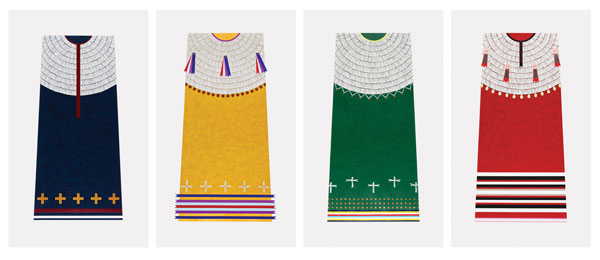 |
| Left to right: Dyani White Hawk, Wówahoku�kiya (Lead), Wóka�e (Create), Nakí�iži�(Protect), Wa�há�tognaka (Nurture). Four editions of eighteen screen prints. Suite of four collectively titled Takes Care of Them, 2019. 55½ x 32" (141 x 81 cm) each. Images courtesy of the artist. |
To my surprise, Dyani White Hawk, one of NAEA 2020’s featured contemporary artists, is a graduate of UW-Madison. I teach in Wisconsin; talk about a small (art) world, right?
Recently, I had the honor of interviewing White Hawk for SchoolArts.
Frank Juarez: Describe the work you do as an artist.
Dyani White Hawk: I consider myself primarily a painter, but my practice also strongly incorporates aspects of my Lakota cultural arts practice, marrying painting with beadwork and porcupine quillwork, leather work, and other culturally based art forms. Most recently, I have also began exploring works in printmaking, performance, video, and photography.
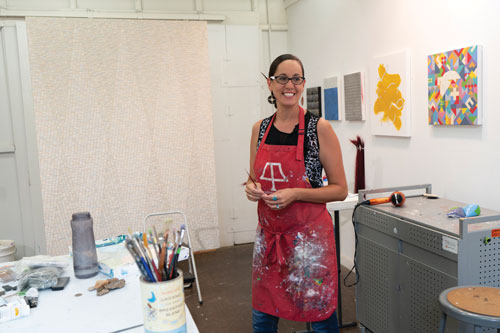 |
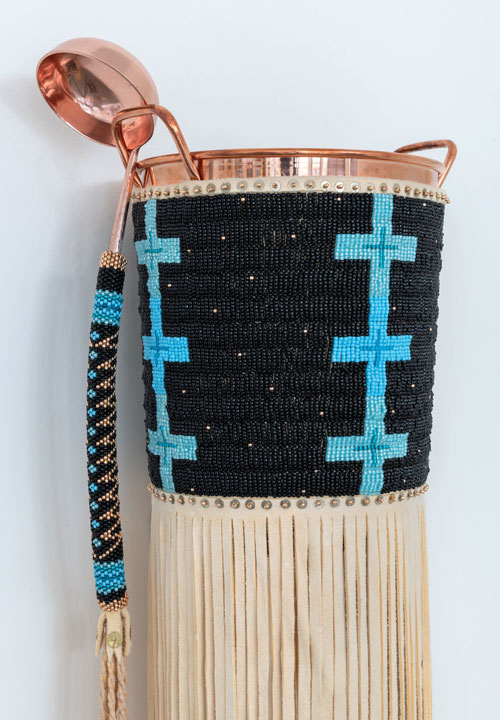 |
| Top: Dyani White Hawk in her studio. Photo by Minneapolis Institute of Art. Image courtesy of the artist. Bottom: Dyani White Hawk, Carry II (detail), 2019. Buckskin, synthetic sinew, glass beads, brass sequins, copper vessel, copper ladle, 122 x 12 x 10" (310 x 30.5 x 25 cm). |
FJ: Today, the concept of the artist studio has a broad range of meanings. Artists may spend much of their time in the actual studio, or they may spend very little time in it. Tell us about your studio practice.
DWH: My studio practice is fairly traditional in that I have a devoted studio space within a commercial building where I paint and create things. I spend as much time here as possible Monday through Friday. But I also bead and sew at my dining room table. At home, I make dresses, moccasins, jewelry, and pieces intended for cultural practices as opposed to gallery spaces. I consider this just as important as the work I make in my studio.
This past summer, I was working on a video installation piece in collaboration with videographer and friend, Razelle Benally. In this case, my studio was in a car and in Native communities in New York, Wisconsin, South Dakota, Minnesota, and New Mexico. I spent over six months of this year also working in collaboration with Highpoint Center for Printmaking on four screen prints. On and off for over six months, I was working in Highpoint’s artist studio. In summary, I have a studio, but my studio practice is not confined to that single space.
FJ: What challenges do you face as an artist? How do you address them?
DWH: There are plenty, but making time to make the work seems to be the never-ending battle. You think that once you are working solely as an artist, you get to spend all your time focused on making your artwork, toiling the days away in the studio. But the reality is you are still fighting for the time, constantly working to protect and demand that time. There is so much administrative work: so many applications to fill out, reports, emails, phone calls, interviews (ha!), studio visits, website management, etc.
I don’t have an “I’ve solved the problem!” answer. My strategy to address this varies over time, adapting to current needs. At times, it means working really late hours. I tend to get a lot done after quitting time for the majority of the world, when everything goes quiet. Sometimes I need to set my phone to “do not disturb” so that only calls and messages from my priority contacts are heard, shut my laptop, and set time limits on social media.
Other times, I have to urge my family not to call or text unless they really need me. It requires saying “no” to the regular requests that appear in my inbox. That’s not always easy to do, especially when the requests tug at your heartstrings. It requires self-discipline and a consistent battle against human avoidance or procrastination tendencies. I have a few reminders written on a white board in my studio that help me [such as] “Feed your focus and starve your distraction,” and “Work is love made visible.”
I’ve also learned that in order to continue, it’s imperative to take care of my physical, mental, and spiritual well-being. In order to be able to function during those precious hours in the studio, I need to be in the best place I can be.
.jpg) |
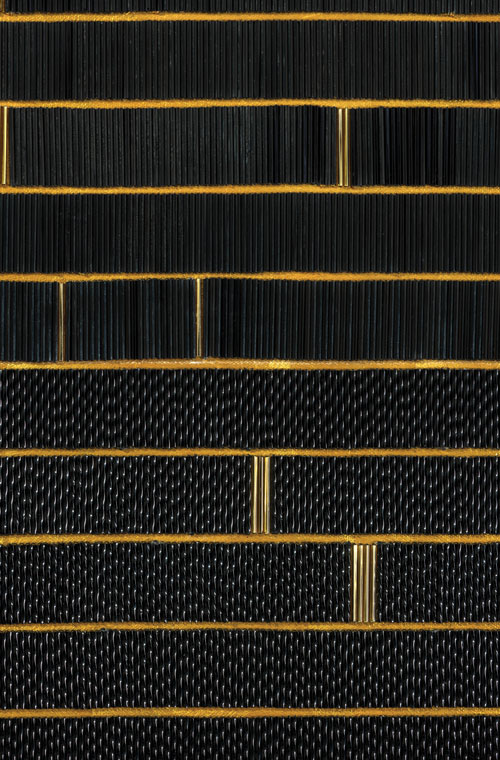 |
| Top:She Gives (Quiet Strength IV), 2018. Acrylic on canvas, 60 x 48" (152 x 122 cm). Images courtesy of the artist. Bottom: Untitled (Black and Gold) (detail), 2019. Acrylic, bugle beads, sinew on canvas, 48 x 48" (122 x 122 cm). |
FJ: What are you looking forward to when you co-present at the 2020 NAEA Convention in Minneapolis, MN? What message do you want your audience to leave with?
DWH: I am looking forward to meeting new people invested in the arts and education. These are my passions as well, so it is always such a joy to make new connections and reconnect with friends and peers in the field. I am looking forward to sharing a discussion with my friends Gwen and Jonathan and sharing with such an important and large audience a bit about our experiences as Native artists.
It is so important that all people are familiar with, thinking about, including, celebrating, and nurturing an understanding of and value for the Indigenous people of this land. We are so infrequently featured in mainstream arts institutions and education, yet our people have and continue to make significant contributions to the arts.
It is so important that all people are familiar with, thinking about, including, celebrating, and nurturing an understanding of and value for the Indigenous people of this land. We are so infrequently featured in mainstream arts institutions and education, yet our people have and continue to make significant contributions to the arts.
Frank Juarez is the head of the art department at Sheboygan North High School in Sheboygan, Wisconsin, and a contributing editor for SchoolArts. FrankJuarezGallery@gmail.com
WEB LINKS
Artist Website
View this article in the digital edition.
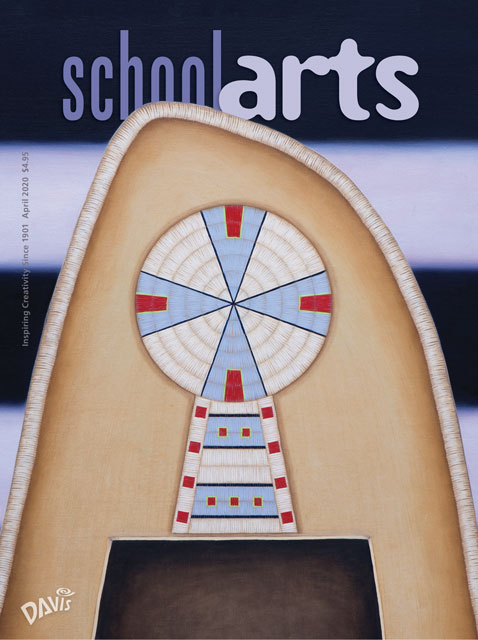




.jpg)

